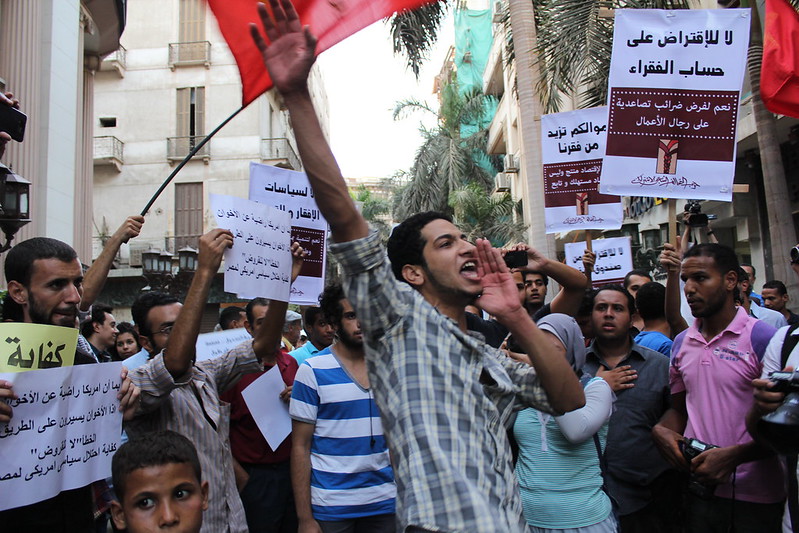The IMF’s New Loan to Egypt: A Lifeline or a Band-aid?
In a substantial move, the International Monetary Fund (IMF) has increased its loan to Egypt from $3 billion to $8 billion, making Egypt the Fund’s second-largest borrower after Argentina. This latest financial support adds to a long history of economic intervention and instability in the country, culminating in a ballooning external debt that rose from $46.1 billion in 2014 to $168 billion as of December 2023. As Egypt grapples with this newfound financial strain, questions arise about whether such IOUs are effectively managing or perpetuating the crisis.
A Decade of Economic Reforms and Persistent Instability
Since Egyptian President Abdel Fattah El Sisi assumed office in 2014, Egypt has participated in extensive economic reforms under the guidance of the IMF. However, these reforms have not resulted in the anticipated macroeconomic stability or inclusive growth. Between 2016 and 2024, Egypt’s GDP in current US dollars shrank from $351.44 billion to a projected $347.59 billion, according to IMF figures. The country faced multiple liquidity crises and saw its exchange rate collapse thrice—in 2016, 2022, and 2024.
Furthermore, skyrocketing inflation has hit Egyptians hard. Food and beverage prices increased by over 70%, with core inflation exceeding 40% in 2022. Adding to these woes, labor force participation has also seen a steep decline, particularly among women. The government has steered clear of publishing updated poverty statistics, but the situation on the ground paints a bleak picture.
Vanity Projects Amid Economic Turmoil
Despite the economic hardship experienced by everyday Egyptians, the government has been diverting funds to grandiose projects, including a new $58 billion administrative capital. This project includes the tallest tower in Africa, the world’s longest monorail, and a lavish new presidential palace. Much of this extravagance is overseen by a company owned by Egypt’s military, aligning with President Sisi’s strategy of consolidating power and displaying what critics label as “elite capture.”
Meanwhile, Egypt has also been a leading arms importer, suggesting a preference for heavy military spending over essential economic stability.
The IMF’s New Programme: A Double-Edged Sword
The IMF’s latest financial intervention appears to focus on implementing austere measures, including capping public investments to ensure debt payments are met. While reduction in reckless spending is a logical step, the projected growth rates seem unrealistic. The IMF foresees GDP growth rising from 4.4% in 2024-25 to 5.6% in 2028-29, but these figures come with an assumption of significant private sector investment—a challenging prospect given the current economic climate.
The private sector in Egypt has been retracting steadily, hindered by prohibitive borrowing costs and a weakened consumer purchasing power due to inflation and currency devaluation. Political conditions deter investment further, exacerbated by limited access to reliable data, press repression, and an untrustworthy judiciary.
A Vicious Cycle of Debt and Political Stagnation
The crux of Egypt’s enduring economic crisis lies in political mismanagement that has leveraged the state for narrow interests. Rather than undertake essential reforms, the leadership has continued to exacerbate economic instability. The IMF’s loans have, to some extent, facilitated this process, by enabling further borrowing without addressing these core issues.
The new loan programme’s design appears inadequate for achieving long-term economic stabilisation, let alone private sector-led growth or poverty alleviation. Although the IMF is not solely responsible for Egypt’s financial predicament, its involvement has undeniably empowered the country’s leadership to continue economic malpractice.
The Future: Too Big to Fail or Too Big to Bail?
Looking ahead, the outlook remains grim. Egypt’s debt, when the current IMF programme concludes, will likely exceed projections, inflation will remain high, and the need for further financial support will persist. Given that recent bailouts from the UAE, IMF, World Bank, and European Commission collectively approach $57 billion—around 15% of Egypt’s GDP—the nation hovers between being “too big to fail” and “too big to bail,” as former World Bank Economist Ishac Diwan aptly put it.
In conclusion, while the latest IMF loan offers temporary relief, it’s far from a permanent solution. Sustainable recovery will require addressing the underlying political and economic dysfunctions that have long plagued Egypt.
Final Thoughts
The cycle of debt and superficial reforms continues to afflict Egypt. The critical challenge now is whether domestic and international actors can align to bring about genuine, sustainable changes, rather than repeated, short-term fixes.
For more information about the IMF’s initiatives, visit the International Monetary Fund’s official website.
